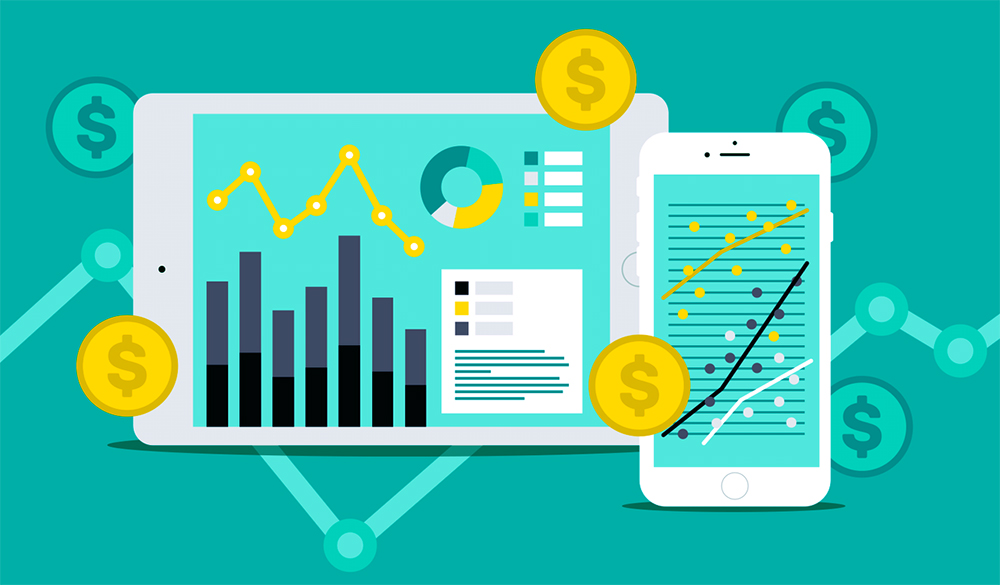To simplify the thought, data monetization is simply converting data into money. Presently, giant and leading companies like Google and Facebook derive a great portion of their revenue from the effective utilization of data resources. They have gained the expertise of data monetization. These companies offer free public service and provide aid to many things the community needs – like communication – that allows them to mine massive amounts of data about their users. After data collection, they provide this in exchange for a fee to advertisers and marketers that want to create a personalized marketing experience.
This is the basic concept of data monetization, but it is not the only way your enterprise can turn data into money. You can also use your data reserves to identify those business process optimizations that attract revenue and reduce expenses.
While there are lots of possibilities regarding data, there are several potential opportunities for data monetization.
- Identifying new revenue prospects (products, markets, ventures or customer segments)
- Developing marketing impact through personalization
- Identifying and active response to customer satisfaction levels
- Decreasing customer bouncing and increasing customer retention
- Optimizing the supply chain through data sharing and configuration with associates
- Analyzing revenue leakage and establishing corrective measurement
- Detecting and preventing fraud and piracy
These are forms of data monetization because they use data assets to generate economic value.
Because profit maximization is a common goal across industries, it’s no wonder that companies get excited about how they can leverage their data to meet or exceed their targets. Mastering the art of turning data assets into cold & hard cash is a true challenge, there are many things you need to observe.
Here are the key factors you need to consider in order to take advantage in transforming data from your ad account into actual revenue.
What Data Has Value?
First, you need to take the inventory of your data assets and identify what you have of value in generating additional revenue or realizing actual cost savings. During this procedure, you will observe that not all data is of equal value. Frequently, teams get so caught up in the technical definition of their data dictionaries that they lose focus on the use of this inventory.
It is beneficial to have a technical description of what data you have and in what systems that data survives, the key value of a data dictionary is to document what data elements you can leverage in order to generate economic value for the organization as well as how uncontaminated and thorough this data is.
Who Is Your Audience?
After you have clarified what data is valuable, you need to identify who is the prospective audience for this data. These consumers could be external to your organization (as are many of those Google, Twitter and Facebook services) or internal groups such as sales, marketing, or operations that transform the information into revenue-generating or cost-saving segments.
How and When Will You Deliver the Data?
After you have clarified what data is valuable and for whom it has value, identify how to deliver this information to these consumers in the most useful and understandable format possible. When you assess your delivery mechanism, you need to consider what behavior eventually drives economic value. If a report or dashboard assists this behavior, this delivery medium is useful
However, if your reports and dashboards are not visited or are visited but not effectively used, you must exert effort to assess other methods to get information into your user’s hands at the right moment. Don’t limit your creativity and capability to reports, charts, flowcharts, and graphs. Sometimes, information delivery happens in a much different approach.
Take the advertising revenue generated by Google as a good example. The most valuable data to advertisers is not a report detailing demographic information about users. Rather than that, the advertisers prefer a real-time pairing of this user division with an opportunity to place the flawless ad in front of the right consumer who is planning to execute a buying decision.
Additionally, identifying the right media platform and format, you also need to evaluate how necessary timeliness is in pairing your data with the monetization opportunity. In the field of financial transactions, every millisecond can be the difference between valuable and valueless data. In digital marketing, you might have a longer period to effectively market to a group of users.
Just when you look at an item on Amazon and then see the presence of advertisements for that product follow you around the website, what you have experienced is a longer time span. It is not necessary to see the ads for that item the exact moment you look at it. The truth is the timing, it can happen preemptively in order to keep your mind cling to your purchase decision for days, weeks or even months.
How Should You Process to Add Value?
Lastly, data in its purest form is often not at its maximum ability. This happens when origins of data sometimes coming from multiple systems are combined and information is concluded that the value is maximized. When Facebook and Google analyze a profile, it is not centered on a single search, view, click or like. It is based on the conclusion of all the activities related to a user. From this information and by using their systems with specialized algorithms they can derive interests, income level, buying habits, and location. The more complete the generation of the profile, the more valuable they become especially for the advertisers who want to put their ads in front of a specific audience with a tendency to buy.
Knowing your inventory data and its value will help find further tools to help you. In terms of big data or high-frequency data, extracting that data to an Excel spreadsheet and breaking it down to numbers is not feasible enough because it can’t accommodate and sustain the scale. This is where big data tools such as automated extract, transform, and load (ETL), specialized algorithm, forecasting methods, massive parallel processing (MPP) can be used to ensure data relevance as well as that the process happens consistently across thousands of millions of records.








